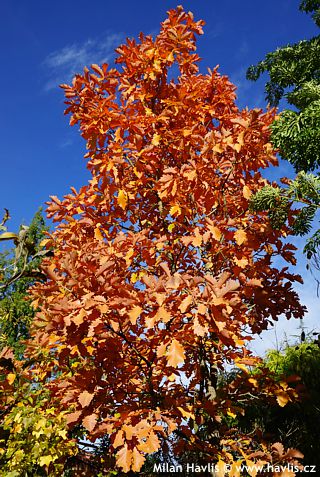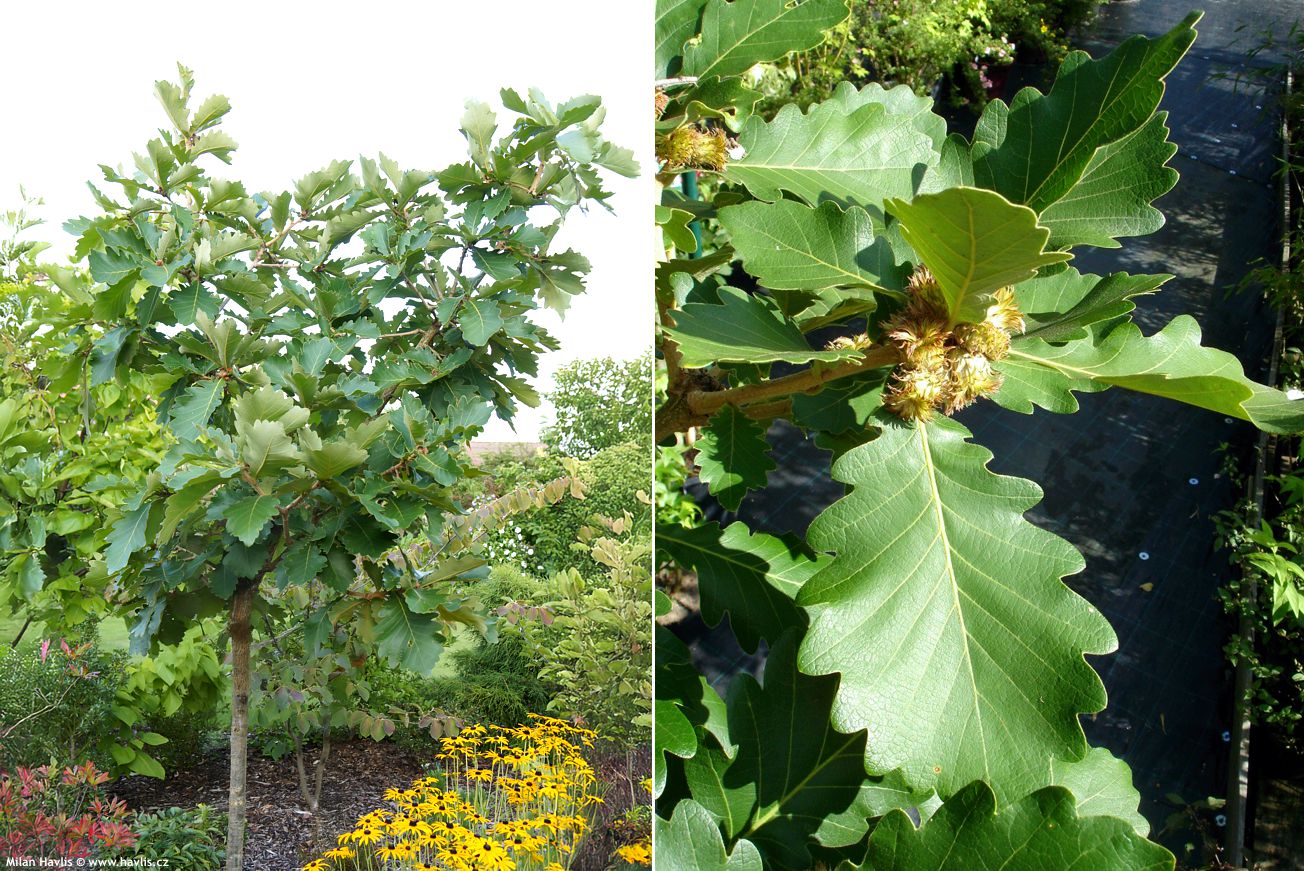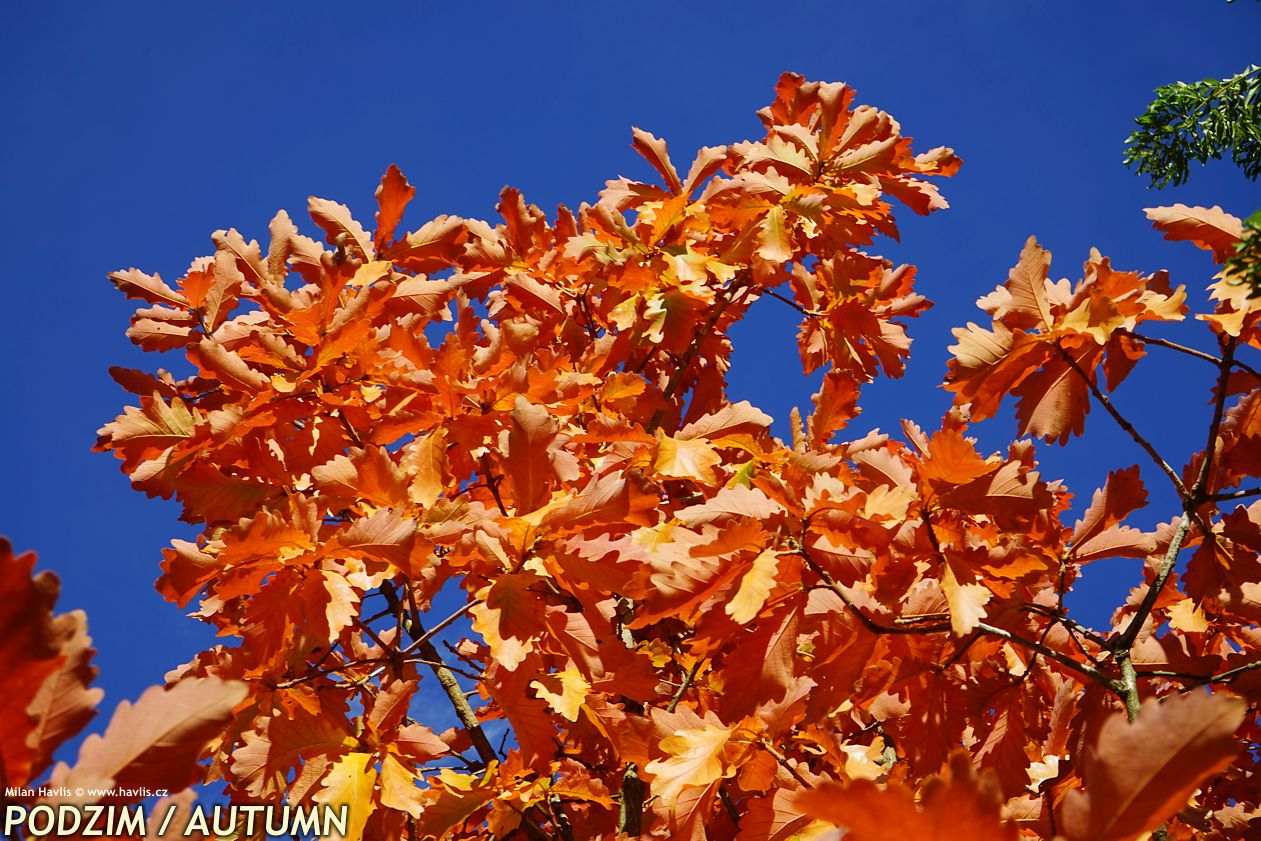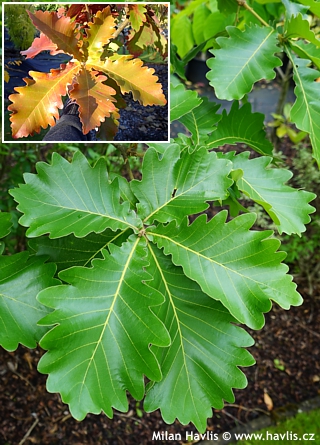Quercus dentata 'SIR HAROLD HILLIER' Daimyo oak, Korean oak


Quercus
Oak trees are an integral part of our landscape, whether they come from America, Asia, or southern Europe. They border our ponds, adorn mixed forests, and many species and cultivars are popular in large parks and botanical gardens. Daimyo oak originates from Asia, specifically from Mongolia. It extends south and east through central and southern parts of Asia, reaching as far as Korea and Japan. It was introduced to Europe in 1830. It is a large tree with sparse branching, where its beauty is ensured by its huge leaves, which are used in Japanese cuisine to wrap kashiva mochi (a Japanese dessert) but are not eaten. It is an ideal tree for a continental climate, where it benefits from seasonal changes and a cooler winter, which allows it to grow somewhat slower than in warm maritime climate, but it branches better.Sir Harold Hillier (1905-1985) was a renowned British horticulturist and dendrologist who became famous for his work in horticulture and plant conservation. In 1953, he founded the Hillier Arboretum, now known as the Sir Harold Hillier Gardens. Located in Ampfield, near Romsey in Hampshire, it covers an area of 180 acres. It contains over 42,000 trees and shrubs, including rare and endangered species. Sir Harold Hillier was knighted in 1983 for his contributions to horticulture. His gardens are now managed as a charitable organization and serve for conservation, education, and recreation.
This oak grows moderately fast and is considered a smaller tree compared to common oaks. Its final height in C.E. climate in gardens with limited root space can reach around 6-8 meters with half the width, but in parks and open landscape, it can grow up to twice that, though over many decades. Young trees make upright branches and form a narrowly pyramidal canopy, which becomes slightly rounded with age. They are often pruned in late winter to achieve a denser habit and maintain a smaller size. Shaped trees look luxurious and offer slightly larger leaves. The trunk is heavily furrowed.
It is not difficult to grow, just avoid waterlogged or water-retentive soil, where a new plant could rot from the roots. Fertilization is not required, nor is it recommended in order to ensure good maturation of new shoots and better branching. Soil pH does not matter. Plant it in full sun only. Newly transplanted trees need a strong support for 2-3 years until they establish. It is very hardy and has already survived winters in Canada at -37 °C.
Last update 21-02-2025
Goods are shipped all over Europe. For Russia and U.K. and for further details please read about SHIPPING OPTIONS HERE.
Are you interested in a serious discount for orders NOV-FEB? Check your options here.
THE PRICES INCLUDE VAT of 15%. For quick conversion you can use 1 CZK = approx. 0.04 EUR
- STANDARD QUALITY - Plants of this group are 1st class quality with number of branches and overall density adequate to their size and age, considering they were container grown.
- DE LUXE QUALITY - This label guarantees a luxurious quality of manually selected plants that, compared to their height and age, are exceptionally dense and beautiful.
- EXTRA - These plants are usually mature and bigger specimens with exceptional overall appearance.
- STANDARD (as described in the plant form) means a tree with a trunk of 190-210 cm and a crown at the top, unless specified differently. The commercial size for trees is their girth measured in the height of 1m from ground.
- HOBBY - These plants are of the same quality as our standard-quality plants but younger and therefore cheaper.
- SHRUB - a woody plant with branches growing bushy from the ground level.
- HALF-STANDARD or MINI-STANDARD - a small tree with shorter trunk, its size is usually specified.
- FEATHERED - These are trees with branches growing already from the base of the trunk and up along the stem.
- GRASSES and PERENNIALS - Sizes given usually read the diameter of the pot or the clump, as specified.

















